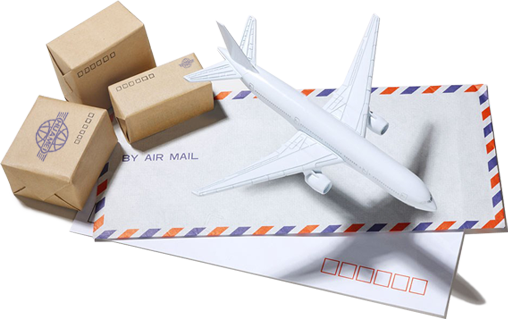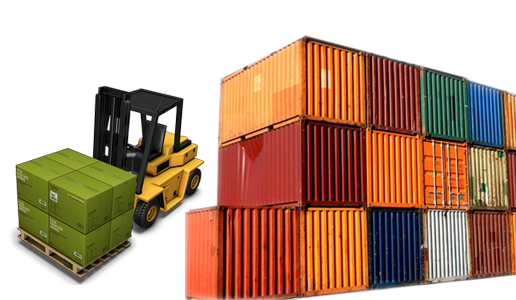Shenzhen, Guangzhou to the United States, Europe, Australia, stainless steel plate, FCL, LCL shipping export, express ship straight to the door
Preamble: We specialize in stainless steel sheet sea export services from Shenzhen, Guangzhou to the United States, Europe and Australia, providing FCL and LCL shipping options. Our direct door-to-door service ensures that your cargo reaches its destination quickly and safely. With our extensive experience and efficient logistics system, we tailor the best transportation solutions for our customers to meet their needs. Choose us to make your international trade smoother and hassle-free, and achieve seamless connection of global business.
Today, with the increasing frequency of global trade, stainless steel plate, as an important industrial material, has a growing demand for transportation. For customers seeking to export from Shenzhen and Guangzhou to the United States, Europe and Australia, we provide professional stainless steel plate shipping solutions. Whether it's FCL or LCL, we've got you covered. Our direct sailing, door-to-door service ensures that your cargo arrives safely and on time, making your international logistics experience smoother and more efficient.
Stainless steel plate shipping to the United States, Europe, Australia Price timeliness:
The price and timeliness of shipping stainless steel sheets to the United States, Europe, or Australia will vary depending on a number of factors. Overall, depending on the market conditions and your specific needs and budget, we can provide you with a personalized sea freight solution and detailed quotation information. Normally, the time limit for shipping stainless steel sheets to the United States, Europe or Australia is 3-6 weeks, but it will vary depending on other factors. If you have further questions or need a quote, please contact our logistics team with the details of the goods and we will provide you with a tailor-made logistics solution. Here are some of the factors that affect price and timeliness:
(1) Price for tainless steel plate by sea to the United States, Europe, Australia
We offer a transparent and competitive pricing strategy to ensure that each client's budget is properly managed. Specifically, our pricing includes the following aspects:
FCL/LCL cost: according to the volume and weight of the goods, both options for FCL or LCL.
Door-to-door service: from the shipping location to the final destination, including all necessary loading and unloading and transportation costs.
(2) Timeliness for stainless steel plate shipping to the United States, Europe, Australia:
Timeliness is one of the key points of our service, ensuring that your stainless steel plate arrives at its destination in the shortest possible time:
Clipper Shipping: The average transportation time from China to the West Coast of the United States is about 15-25 days, 25-35 days in Europe, and 30-40 days in Australia.
Pre-arrangement: estimate the shipping time in advance to ensure that the goods are on time.
Fast customs clearance: customs clearance and delcarations service guarantee fast customs clearance at the port of destination to avoid delays.
Customs clearance documents and processes for stainless steel plate export by sea:
There're multiple stages and documents during customs clearance for stainless steel plate export by sea, here're general customs clearance documents and processes required:
Customs clearance documents for stainless steel plate export by sea:
Commercial invoice: Clearly list goods description, quantity, unit price, total price, model and specification, etc.
Packing List: List the details of each carton of goods, including the quantity, weight, size, etc.
Sales contract: a trade contract signed by both parties, clarifying the obligations and responsibilities of buyer and seller.
Bill of Lading: The bill of lading is the proof of ownership of the goods, which is divided into the master bill of lading (Master Bill of Lading) and the house bill of lading.
Certificate of origin: Certifying the origin of the goods is usually issued by relevant agencies (such as chambers of commerce), and some countries have origin requirements for specific products.
Export license: Some countries need an export license for the export of specific stainless steel plates, and you need to apply to the relevant departments in advance.
Inspection and quarantine certificate: a certificate issued by the inspection and quarantine agency to prove that the goods meet the health and safety standards of the exporting country.
Insurance policy: the cargo transportation insurance policy, which proves that the goods have been insured to ensure the safety of the goods during transportation.
Customs clearance process:
Preparation of goods: the goods are packaged, marked and inspected, and ready for shipment.
Submit export declaration: submit export declaration to the customs, including commercial invoices, packing lists, bills of lading, certificates of origin and other documents.
Customs inspection: The customs will inspect the goods and verify the quantity, specification, value and other information of the goods.
Pay customs duties and fees: Pay the corresponding export duties and fees according to customs regulations.
Customs release: After the customs has passed the review, a release notice will be issued to allow the goods to be loaded and exported.
Shipment: The goods are loaded on the ship, and the bill of lading is obtained.
Document circulation: bills of lading, commercial invoices, packing lists and other documents are transferred to the port of destination for import customs clearance.
Customs clearance at the port of destination: After the goods arrive at the port of destination, the consignee or its agent submits the import customs clearance documents to the customs of the port of destination and completes the import customs clearance procedures.
Precautions for the export of stainless steel plates by sea:
Prepare in advance: Customs clearance documents need to be prepared in advance to ensure that the information is accurate and avoid delays.
Understand the requirements of the destination: Different countries may have different requirements and restrictions on the import of stainless steel plates, so you need to understand and prepare relevant documents in advance.
Professional services: Consider using professional customs clearance agency services to ensure that the customs clearance process is smooth and unimpeded.
Following the correct customs clearance documents and processes can ensure a smooth export of stainless steel plates and avoid delays and additional costs due to incomplete documentation or process errors.
Purchase of stainless steel plate sea export insurance:
As a high-value product, stainless steel plate involves a variety of risks in the process of export by sea, including but not limited to cargo loss, damage, delay, etc. In order to protect your interests, it is very necessary to have proper cargo transportation insurance. Here are some of the key steps and considerations for purchasing stainless steel sheet sea export insurance:
Type of Insurance:
Basic Coverage: Usually only covers the loss of goods caused by major accidents such as ship sinking and fire.
All Risks Coverage: In addition to the basic insurance, it also includes the loss of goods due to accidents (such as collisions, storms, etc.) and natural disasters during transportation.
Specific Risks: for specific types of risks, such as war risk, strike risk, etc.
Steps to purchase:
Choose an insurance company: Choose an insurance company with a good reputation and rich experience in marine insurance.
Provide cargo information: provide a detailed description of the stainless steel plate, including product model, value, quantity, packaging form, etc.
Determine the amount of insurance: usually the value of the goods plus the transportation costs and expected profits.
Sign the insurance contract: confirm the insurance terms and exemptions, and sign the insurance contract.
Pay the premium: pay the corresponding premium according to the requirements of the insurance company.
Precautions:
Valuation of goods: Ensure that the value of the goods is accurate, too high or too low valuation may lead to difficulties in settling claims.
Insurance terms: Read the insurance contract carefully to understand the coverage and exclusion clauses of the insurance.
Transportation details: ensure that the transportation details (such as routes, loading and unloading methods, etc.) meet the insurance requirements.
Record-keeping: Keep all documents and records related to goods, insurance, and transportation in order to make claims when needed.
Claim Process:
Report Damage: After the goods are damaged or lost, immediately notify the insurance company and provide a preliminary loss report.
Inspection and evaluation: The insurance company may send someone to inspect the site or require relevant evidence.
Submit claim documents: provide documents including insurance policies, bills of lading, invoices, packing lists, loss reports and other documents.
Claim review: The insurance company reviews the claim request and confirms whether it meets the compensation conditions.
Compensation: After the review is passed, the insurance company will pay the compensation.
Taking out proper marine insurance not only protects your cargo, but is also an important part of your compliance operations. Consult an experienced insurance advisor or contact the insurance company directly to ensure the safe transportation of stainless steel plates.
stainless steel plate sea export packaging requirements:
The packaging requirements of stainless steel sheets in sea exports are crucial, as proper packaging not only protects the goods from damage during transportation, but also ensures compliance with customs and the standards of the importing country. The following are the packing requirements for stainless steel sheet for sea export:
Selection of packaging materials:
Waterproof materials: Use waterproof and moisture-proof packaging materials, such as plastic film, moisture-proof paper, etc., to prevent stainless steel plates from rusting due to moisture during sea transportation.
Reinforcement materials: Use reinforcement materials, such as wooden boxes, wooden pallets, steel belts, etc., to enhance the stability and extrusion resistance of the packaging.
Packing:
Whole piece packing: For larger stainless steel plate pieces, wooden boxes or steel frames should be used for packing to ensure that each piece of goods is fixed within the frame to prevent movement and collision.
Strapping and packing: For smaller stainless steel plates, such as steel bars, wires, etc., steel strips or wires should be used for bundling, and ensure that the bundling is firm to avoid scattering.
Identification and Labeling:
Clear Label: The weight, size, quantity, and consignee information of the goods should be clearly marked on the outside of the package to ensure that the goods can be correctly identified and handled during transportation.
Dangerous goods identification: If stainless steel plates are dangerous goods or require special handling, the corresponding dangerous goods identification and handling instructions should be marked on the packaging.
Packaging Inspection:
Internal inspection: After packaging is complete, an internal inspection should be carried out to ensure that there are no missing tools, materials, or other debris that could cause damage during shipping.
External Inspection: Check that the outside of the package is intact and that there are no breakages or looseness, ensuring the integrity of the package before shipping.
Comply with international standards:
Compliance with international standards: Ensure that the packaging complies with international ocean packaging standards (such as ISO standards), as well as the import requirements of the destination country, to avoid customs clearance delays or returns due to packaging problems.
Special handling requirements:
Anti-rust treatment: For stainless steel plates that are prone to rust, anti-rust treatment should be carried out before packaging, such as spraying anti-rust oil or wrapping with anti-rust paper.
Isolation treatment: Different types of stainless steel plates should be isolated to avoid damage or contamination caused by contact with each other.
Following these packaging requirements can effectively reduce the risk of stainless steel plate in the process of sea export, ensure that the goods arrive at their destination safely and on time, and also improve customer satisfaction.
Precautions for export of stainless steel plate by sea:
When exporting stainless steel sheet by sea, it is necessary to pay attention to many aspects to ensure that the entire export process is smooth and efficient, and to reduce potential risks and losses. Here are some key considerations:
Understand regulations and policies:
Destination country requirements: different countries may have specific regulations and standards for the import of stainless steel plates, including quality standards, inspection, quarantine, etc. which need to be understood in advance:
Export restrictions: Some countries may impose export restrictions or bans on specific types of stainless steel sheets, so be sure to check the relevant policies.
Prepare documents accurately:
Relevant customs clearance documents: ensure that the documents such as commercial invoices, packing lists, bills of lading, certificates of origin, export licenses, etc., are complete and accurate.
Allow time: Allow enough time when preparing documents to avoid delays due to clerical errors or missing documents.
Choose the right mode of transportation:
Container V.S FCL: Choose the right mode of transport according to the volume and type of cargo. FCL shipping is suitable for bulk shipments, while LCL is suitable for small shipments.
Transportation company selection: Choose an experienced and reputable freight forwarding company to ensure a safe and smooth transportation process.
Pay attention to packaging and identification:
Professional packaging: Stainless steel plates should use suitable waterproof, moisture-proof, and rust-proof packaging materials, and ensure that the goods are not easy to move during transportation.
Clear marking: All packages should be clearly marked, including consignee and consignee information, cargo name and center of gravity identification, to ensure that the goods can be handled correctly.
Quality Inspection:
Inspection report: Conduct quality inspection on the exported stainless steel plate, obtain relevant inspection reports, and ensure that the products meet the standards of the destination country.
Video recording: If necessary, the packaging process can be videotaped to prevent disputes.
Arrange time reasonably:
Reserve transportation time: Reasonable planning of transportation and customs clearance time to avoid affecting operations due to time constraints.
Holiday Notes: Considering factors such as holidays and port congestion, allow extra time to deal with unforeseen delays.
Insurance:
Cargo transportation insurance: insure the goods in case of loss during transportation and ensure the safety of the goods.
Keep communicating:
Communication with the buyer: Maintain good communication with the buyer throughout the export process, timely update on the shipping status and customs clearance issues.
Communicate with freight forwarders: keep in close contact with freight forwarders and solve problems that may be encountered during transportation in a timely manner.
Through the above precautions, we can effectively reduce the risks that may be encountered in the process of sea export of stainless steel plates, and ensure that the goods arrive at the destination smoothly and in time.
By choosing our stainless steel plate export service, you will not only be able to enjoy fast transportation, but also get a full range of logistics support. From loading to destination, our dedicated team will be with you every step of the way to ensure a seamless process. Let your international trade have no worries and help your career take off. Contact us now to start an efficient and convenient international logistics journey and meet broader market opportunities together.











